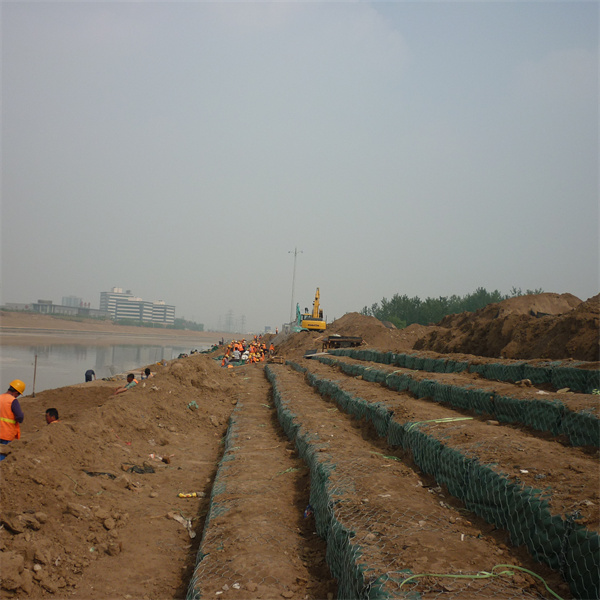Oct . 11, 2024 11:53 Back to list
Optimal 6ft Gabion Wall Solution for Garden and Landscape Design
Building the Best 6ft Gabion Wall A Comprehensive Guide
Gabion walls have gained popularity in recent years for their aesthetic appeal, structural integrity, and environmental benefits. A gabion wall, typically made from a series of stacked stone-filled wire cages, offers a versatile solution for various landscaping and civil engineering projects. Among the different sizes of gabion walls, the 6-foot gabion wall stands out for its balance between height, durability, and ease of construction. In this article, we will explore the features, benefits, and steps to build the best 6ft gabion wall.
What is a Gabion Wall?
A gabion wall consists of wire mesh cages filled with natural stones or other materials. The term gabion comes from the Italian word gabbione, meaning big cage. These walls are often utilized for erosion control, retaining soil, and creating aesthetically pleasing landscape features. The 6ft height is particularly advantageous, as it provides sufficient elevation to address various landscape design challenges while remaining manageable for construction.
Benefits of a 6ft Gabion Wall
1. Structural Integrity Gabion walls are inherently strong and stable due to their weight and the way they distribute pressure. A 6ft wall can effectively retain soil and withstand environmental forces like water flow and wind.
2. Environmental Benefits Unlike traditional concrete walls, gabion walls are eco-friendly. They allow for water drainage, reducing the risk of erosion and flooding. Furthermore, they encourage vegetation growth, promoting biodiversity and contributing positively to the landscape.
3. Aesthetic Flexibility With a variety of stone types and colors available, a 6ft gabion wall can be integrated into various design styles, from rustic to modern. The stones can also serve as a habitat for wildlife, enhancing the ecological value of the surrounding area.
4. Cost-Effectiveness While the initial investment may vary depending on materials and labor, gabion walls often prove to be cost-effective over time. Their longevity and low maintenance requirements reduce overall expenses.
Step-by-Step Guide to Building a 6ft Gabion Wall
Step 1 Planning and Design
Before diving into construction, it’s essential to plan your gabion wall. Determine the purpose of the wall, the area it will occupy, and its desired height and length. A professional survey may be necessary to assess the site and ensure proper drainage and structural safety.
best 6ft gabion wall

Step 2 Gather Materials
For a 6ft gabion wall, you will need the following materials - Steel wire mesh cages (with appropriate gauge and size) - Stones (choose high-quality stones that fit well within the cage) - Tools (wire cutters, gloves, a shovel, and a level) - Optional landscape fabric and gravel for drainage
Step 3 Prepare the Site
Clear the area where the wall will be built. Ensure the ground is level to provide a stable base. If required, dig a trench for improved stability, especially if the wall is to retain a significant amount of soil.
Step 4 Assemble the Gabion Cages
Follow the manufacturer’s instructions to assemble the gabion wire cages. It’s advisable to place the cages on a flat, well-drained surface. Geotextile fabric can be used as a barrier between the soil and the stones, preventing sediments from clogging the gaps.
Step 5 Fill the Gabion Cages
Using the chosen stones, fill the cages, ensuring even distribution. Place larger stones at the bottom and smaller ones on top for aesthetics and stability. It’s crucial to avoid leaving large gaps, which can compromise the wall’s integrity.
Step 6 Cap and Secure the Wall
Once the cages are filled, securely close them. If necessary, you can use additional wire to maintain the shape and stability of the wall. A final check will ensure the wall is level and uniformly filled.
Conclusion
Building a 6ft gabion wall is a rewarding endeavor that combines practicality with natural beauty. By following the steps outlined above and acknowledging the myriad benefits of gabion walls, you can create a structure that not only addresses your landscaping needs but also enhances the environment. Whether for retaining soil, landscaping, or decorative purposes, a well-constructed gabion wall can stand the test of time, providing lasting beauty and functionality.
-
Visualizing Gabion 3D Integration in Urban Landscapes with Rendering
NewsJul.23,2025
-
The Design and Sustainability of Gabion Wire Mesh Panels
NewsJul.23,2025
-
The Acoustic Performance of Gabion Sound Barriers in Urban Environments
NewsJul.23,2025
-
Mastering the Installation of Galvanized Gabion Structures
NewsJul.23,2025
-
Gabion Boxes: Pioneering Sustainable Infrastructure Across the Globe
NewsJul.23,2025
-
Custom PVC Coated Gabion Boxes for Aesthetic Excellence
NewsJul.23,2025
-
Installation Tips for Gabion Wire Baskets in Erosion Control Projects
NewsJul.21,2025






